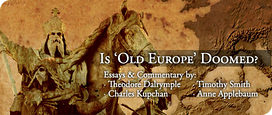I would like to associate myself with the perspective on multiculturalism offered by Professor Smith. I think he presents a sensible and reasoned definition of the term and how it works in practice.
I would also warn against primordial conceptions of Europe’s traditional nation-states—those holding that Europeans have a far less malleable and open notion of national identity than do Americans, due to the nature of America’s foundational principles. It is worth keeping in mind that Europe’s contemporary nation-states are social and political constructions, products of the state-building efforts that began in the 18th century. They are still works in progress, changing in step with demographic shifts on the ground—as made clear by recent changes in German laws on naturalization.
It is also inappropriate to presume that the United States had an integrative, multicultural notion of identity from the outset. Until at least the late 19th century, the citizens of the US demonstrated much stronger loyalties to their separate states than to the union. African-Americans were welcomed into the social mainstream only during the second half of the twentieth century. American multiculturalism was fueled by the industrial revolution, which created an ethnic mixing bowl. America’s open, multicultural approach to national identity is a twentieth century development.
Globalization is now doing the same for Europe—pressing it in the direction of becoming demographic mixing bowls. Traditional notions of nationhood are under threat and their adherents are digging in their heels. But changes in identity do not come easily—as the U.S. Civil War made amply clear.

